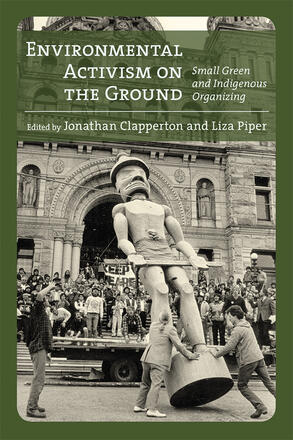
Environmental Activism on the Ground
Small Green and Indigenous Organizing
La description
Environmental Activism on the Ground draws upon a wide range of interdisciplinary scholarship to examine small-scale, local environmental activism, paying particular attention to Indigenous experiences. It demonstrates that the modern environmental movement has been as much a small-scale, ordinary activity as a large-scale, elite one.
Reviews
Jonathan Clapperton and Liza Piper’s essay collection Environmental Activism on the Ground makes an important contribution to scholarly understandings of social movements, environmentalism, and Indigenous/settler relations in Canada and beyond . . . [it] clearly demonstrates that there is much important work to be done by historians in unpacking the significance and impact of small, grassroots environmental groups and Indigenous activists.
—Henry John, British Journal of Canadian Studies
Environmental Activism on the Ground . . . we can all learn something from these compelling examples.
—Sarah Marie Wiebe, Canadian Journal of Native Studies
An excellent contribution to environmental history . . . the versatility of the text is a testament to both the editors’ choices and the strength of the chapters. The histories Clapperton and Piper have collected are a valuable contribution to furthering our understanding of environmentalism in a Canadian context and beyond
—John-Henry Harter, Historie Social / Social History
An excellent book on grassroots Indigenous activism.
—James C. Saku, American Review of Canadian Studies
Environmental Activism on the Ground successfully foregrounds small-scale, local, and Indigenous organizing in the history of the environmental movement. Not only does this recalibrate our understanding of how the movement has been constituted and has changed over time, but as the editors suggest, it obliges us to reconsider what the impacts of the movement have been. The collection presents an alternative to declensionist narratives and helps to explain one reason why grassroots organizing continues unabated: because it has proven capable of winning and fostering lasting connections.
—Justin Fisher, NiCHE: Network in Canadian History & Environment
Historians of the environmental movement have been working to incorporate more stories “from the ground up” and this volume is a wonderful addition to that growing body of research.
—Darren Speece, Environment and History